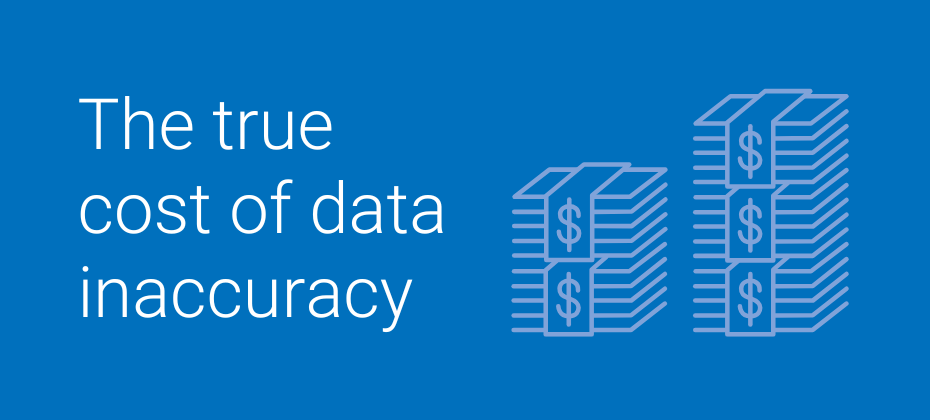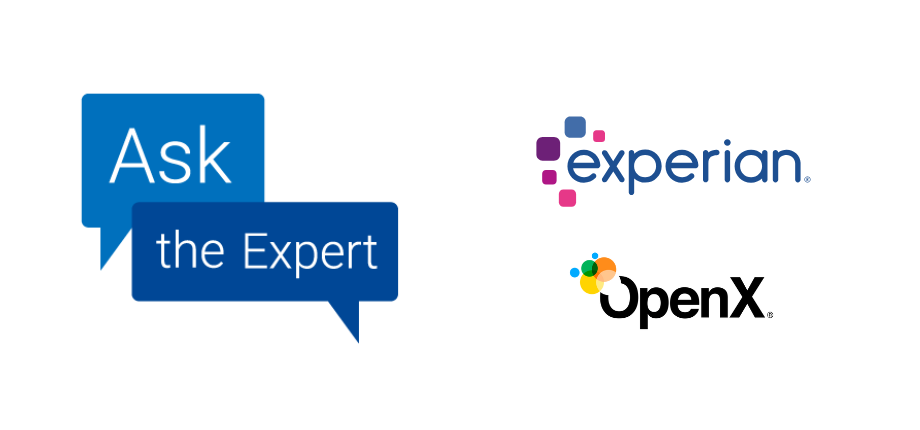At A Glance
AI learns what your data teaches in 2025, "good data" in AI means accurate, current, consented, and easy to connect, or your models lose relevance and your investments underperform. Experian is leading this next era of responsible data where trust, transparency, and innovation come together to make marketing more human, not less.What makes data “good” in the age of AI?
In AI-driven marketing, data quality now defines success. “Good data” in AI isn’t about volume; it’s about the balance of accuracy, freshness, consent, and interoperability. As algorithms guide decisions, they must learn from data that’s both accurate and ethical.
At Experian, we believe good data must meet four conditions:
This is the data AI can trust and the data that keeps marketing relevant, predictive, and privacy-first.
Why does data accuracy matter more than ever?
AI models are only as intelligent as their inputs. Incomplete or inconsistent data leads to bad predictions and wasted spend. As the industry moves toward agentic advertising, where autonomous systems handle campaign buying and optimization, data accuracy becomes even more critical. If your ad server or audience data is flawed, these new AI agents will simply automate bad decisions faster.
Experian applies rigorous quality filters and conflict resolution rules to ensure our data is both deterministic and accurate. Deterministic signals alone don’t guarantee accuracy; they must be verified, deduplicated, and contextualized. Our identity resolution process anchors every attribute to real people, giving brands and platforms the confidence that every insight stems from truth, not noise.

Our data is ranked #1 in accuracy by Truthset, giving our clients confidence that every decision they make is backed by the industry’s most reliable insights.
Just because it is deterministic, doesn’t mean it’s highly accurate. You still need to refine and validate your data to make sure it tells a consistent story. You need to anchor your data around real people.
Why does AI need fresh data?
Outdated data can’t predict tomorrow’s behavior. AI thrives on recency.
At Experian, our audiences are refreshed continuously to mirror real-world signals, from purchase intent to media habits, so every campaign reflects what’s happening now, not six months ago.
And we don’t just advocate for fresh data, we rely on it ourselves. Our own AI-powered models, used across our audience and identity platforms, are continuously retrained on the most current, consented signals. This allows us to see firsthand how freshness drives better accuracy, faster optimization cycles, and more relevant outcomes.
But freshness alone isn’t enough. With predictive insights, our models go beyond describing the past. They forecast behaviors, fill gaps with inferred attributes, and recommend next-best audiences, helping you anticipate opportunity before it happens.
Fresh and predictive data means you’re reaching people in the moment that matters and shaping what comes next. With AI, that’s what defines performance.
How do consent and governance build trust in AI?
Responsible AI starts with responsible data. With 20 U.S. states now enforcing privacy laws, data compliance isn’t optional, it’s operational.
At Experian, privacy and compliance are built in. Every data signal, attribute, audience, and partner goes through our rigorous review process to meet federal, state, and local consumer privacy laws. With decades of experience in highly regulated industries, we’ve built processes that emphasize risk mitigation, transparency, and accountability.

Governance isn’t just about regulation, it’s also about innovation done right. We drive transparent and responsible innovation through safe, modular experimentation, from generative applications to agentic workflows. By balancing bold ideas with ethical guardrails and staying ahead of evolving legislation, we ensure our innovations protect consumers, brands, and the broader ecosystem while moving the industry forward responsibly.
Compliance and governance aren’t just boxes to check; they’re the foundation that gives AI its license to operate.
How does interoperability enable AI’s full potential?
AI delivers its best insights when data connects seamlessly across fragmented environments. Our signal-agnostic identity spine allows data to move securely between platforms (connected TV, retail media networks, and demand-side platforms) without losing context or compliance.

Interoperability isn’t just about moving data between systems; it’s about connecting insights across them. When signals connect across environments, AI gains a more complete view of the customer journey revealing true behavior patterns, intent signals, and cross-channel impact that would otherwise remain hidden.
This unified perspective allows AI to connect insights in real time, improving predictions, performance, and personalization while protecting privacy.
Where do AI and human oversight meet?
AI can make marketing more predictive, but people make it meaningful. At Experian, our technology brings identity, insight, and generative intelligence together so brands, agencies, and platforms can reach the right people with relevance, respect, and simplicity.

Our AI-powered models surface connections, recommend audiences, and uncover insights that would take humans months to find. But our experts shape the process, crafting the right inputs, ensuring data quality, reviewing model outputs, and refining recommendations based on industry knowledge and client goals. It’s this partnership between advanced AI and experienced people that turns predictions into actionable, trustworthy solutions.
What “good data” looks like in action
“Good data” becomes most powerful when it’s put to work. At Experian, our marketing data and identity solutions help brands and their partners connect accurate, consented, and interoperable data across the ecosystem, turning insight into measurable outcomes.
When Windstar Cruises and their agency partner MMGY set out to connect digital media spend to real-world bookings, they turned to Experian’s marketing data and identity solutions to close the attribution loop. By deploying pixels across digital placements and using Experian’s identity graph to connect ad exposure data with reservation records, we created a closed-loop attribution system that revealed the full traveler journey, from impression to confirmed booking.
The results were clear: 6,500+ bookings directly tied to digital campaigns, representing more than $20 million in revenue, with a 13:1 ROAS and $236 average cost per booking. Attributed audiences booked $500 higher on average, and MMGY’s Terminal audience segments powered by Experian data achieved a 28:1 ROAS.
This collaboration shows that responsible, high-quality data and AI-driven insights don’t just tell a better story; they deliver measurable business performance.
Why the future of AI depends on “good” data
The next phase of AI-driven marketing won’t be defined by who has the most data, but by who has the best. Leaders will:
AI success starts with good data. And good data starts with Experian, where accuracy, privacy, and purpose come together to make marketing more human, not less.
Partner with Experian for AI you can trust
About the author

Budi Tanzi
VP, Product, Experian
Budi Tanzi is the Vice President of Product at Experian Marketing Services, overseeing all identity products. Prior to joining Experian, Budi worked at various stakeholders of the ad-tech ecosystem, such as Tapad, Sizmek, and StrikeAd. During his career, he held leadership roles in both Product Management and Solution Engineering. Budi has been living in New York for almost 11 years and enjoys being outdoors as well as sailing around NYC whenever possible.
“Good” data in AI FAQs
At Experian, we define “good data” as the balance of accuracy, consent, freshness, and interoperability. We apply rigorous governance, validation, and cleansing across every signal to ensure that AI systems learn from real-time behaviors, not assumptions. This approach turns data into a foundation for reliable, ethical, and high-performing intelligence.
Experian ensures AI-ready data accuracy through advanced cleansing, conflict resolution, and human anchoring. Experian ensures AI models rely on verified, high-quality inputs. Experian’s data is ranked #1 in accuracy by Truthset.
Yes, Experian can help brands stay compliant with privacy laws. Experian’s privacy-first governance framework integrates ongoing audits, legal oversight, and consent management to ensure compliance with all federal, state, and global privacy laws. Compliance isn’t an afterthought; it’s embedded in every step of our data lifecycle.
Experian makes AI more human by pairing innovation with human oversight to ensure AI helps marketers understand people, not just profiles. At Experian, we believe the future of marketing is intelligent, respectful, and human-centered. AI has long been part of how we help brands connect identity, behavior, and context to deliver personalization that balances privacy with performance. Our AI-powered solutions combine predictive insight, real-time intelligence, and responsible automation to make every interaction more relevant and ethical.
Marketers can activate Experian’s high-quality data directly in Experian’s Audience Engine, or on-the-shelf of our platform partners where Experian Audiences are ready to activate. Built on trusted identity data and enhanced with partner insights, it’s where accuracy meets accessibility, helping brands power campaigns with confidence across every channel.
Latest posts

At this year’s Shoptalk, one thing was crystal clear: Retailers are no longer just competing on price or product—they’re competing on experience. And in that race, customer expectations are not just the starting line—they’re the finish line, too. Over three days of discussions, demos, and side conversations, Shoptalk 2025 delivered a fresh look at how brands and advertisers are adapting to an increasingly blended retail environment. The show spotlighted not just what's new in retail media and AdTech—but how the industry is rethinking the entire shopper journey. What we heard again and again on the ground was this: there is no one-size-fits-all playbook anymore. Every retailer is navigating their own unique mix of identity, data, tech, and consumer needs. The winners will be those who stay nimble while staying connected to what customers actually want. Experience is everything Across sessions and show floor chats, the core message was this: customers expect more—and retailers must rise to meet that moment. Whether it’s a personalized in-store interaction or a seamless connected TV (CTV) ad experience, people want value, inspiration, and storytelling wherever they shop. That means digital and physical channels must work together effortlessly. Retailers aren’t just “digitizing” the in-store experience anymore—they’re rethinking how to make the entire shopping journey feel easy, consistent, and enjoyable. This shift isn’t just about touchpoints. It’s about changing the way retailers think about the customer experience. Loyalty isn’t a program, it’s every interaction Loyalty emerged as a major theme—one that goes well beyond points and perks. Speakers from Wayfair, DSW, and Lowe’s emphasized that every customer interaction, not just formal programs, should be viewed as an opportunity to build emotional loyalty. Sarah Crockett, CMO of DSW, shared that emotional tactics resonate more deeply than transactional rewards—echoing a broader shift toward customer-centric, experience-driven engagement. “Loyalty today isn’t just about perks. It’s about trust, connection, and knowing your customer on a deeper level. Every interaction is a chance to build that relationship.”Sam Zahedi, Sr. Enterprise Partnerships Manager Retail media gets real Retail media networks (RMNs) took center stage, but the tone is changing. With so many players flooding the space, retailers and advertisers alike are asking tougher questions: How do you stand out? How do you prove value? And perhaps most critically—how do you build trust? Standardization came up in several sessions, but as Harvey Ma from Sam’s Club MAP pointed out, standardization alone won’t fix what's been lost: foundational trust and transparency. Advertisers want more than impressions—they want insights, outcomes, and measurement they can count on. “There’s no one playbook—nor should there be. Every retailer, every RMN, and every customer is different. Success comes from building strategies as unique as the audiences they serve.”Anne Passon, Sr. Director, Sales, Retail Many brands came to our team asking how Experian can help extend their audiences into new environments like social and CTV. Here’s how we do it: We work with our RMN partners to take their organized, clean, complete, and highly usable customer records and expand them to include other digital identifiers. By adding digital IDs such as hashed emails (HEMs), mobile ad IDs (MAIDs), CTV IDs, and Universal IDs like Unified I.D. 2.0 (UID2) or ID5, we ensure that the retailer's entire customer base can be reached. On their own, RMNs only know the digital identity of a portion of their customer base. With Experian's help, they can add digital IDs to their entire customer base. As a result, marketers can reach all of an RMN's customers, including those whose identities were previously unknown. They can reach these customers both onsite and offsite, thanks to the array of addressable IDs we provide. This increase in addressability leads to higher revenue for the RMN. Moving at the speed of people One of the most thought-provoking moments came from Nikki Laughlin from McClatchy Media during a Brand Innovators session. She asked a simple but powerful question: How can we move at the speed of people if we’re always looking backward at data? It’s a challenge we’re hearing more often—marketers want to be proactive, not just reactive. That requires faster insights, cleaner connections between signals, and a shift from static audiences to living, evolving ones. Experian's identity and data solutions aren’t just about better targeting—they’re about helping brands activate smarter, faster, and with more confidence across the full media ecosystem. A marketplace of possibilities The best part of Shoptalk? The spontaneous moments. The side conversations where ideas turned into opportunities. We had several discussions that signaled new partnerships on the horizon—some with current clients, others brand new. What united them was a desire to co-create: to build something more tailored, more agile, more customer-first. Of course, there were also shared challenges. Retailers are navigating how to stay customer-centric while grappling with complex, sometimes controversial tech—from AI to influencers to evolving data privacy norms. But if there was one consistent thread, it was this: retailers are hungry for clarity and collaboration. Forget the playbook, follow the customer Shoptalk 2025 reminded us that while tech and trends come and go, the most successful retail strategies still start with one thing: knowing your customer. That’s what fuels smarter activation, stronger measurement, and more meaningful experiences—whether online, in-store, or across emerging media channels. If you're rethinking your retail strategy or want to explore how Experian can support your goals across identity, retail media, or CTV, let’s talk. Let's connect and explore what's possible Latest posts

Originally appeared in MarketingProfs We all understand the importance of data quality. Metrics like third-party validations, match rates, and accuracy scores help us assess data quality on its own terms. Yet too often, organizations struggle to connect high-quality data with real-world business outcomes. How does data accuracy directly impact the ability to reach target audiences and campaign performance? Scale and cost: The tradeoffs of accuracy Marketers are frequently incentivized to prioritize broad reach, even at the expense of precision. This often leads to decisions driven by short-term gains—reaching more people at a lower cost. The temptation is deceptively straightforward, but deep down we know overly simplistic approaches are likely to fall short. Cheaper data solutions, even if they seem to provide greater reach, mask a deeper issue. The data may not be accurate. In fact, the initial savings from cheaper data typically result in higher long-term costs due to inefficiencies and waste that are hard to track. Unless you’re carefully evaluating your campaign results, it can be difficult to see where the inefficiencies are creeping in. The hidden cost of inaccurate data Programmatic platforms make it easy for mistargeted impressions to slip through unnoticed. Common issues include: Stale data, where consumer behaviors and locations have changed but the data hasn’t. Inactive signals, where you think a digital identifier like a device ID is addressable, but the device hasn’t been used in months. Disparate or duplicative data, where you think you’re reaching three people but in fact it’s just one person who you’re frequency bombing. Nobody likes getting the same ad over and over again. It’s like if your co-worker messaged you “hey” five times in a row. Direct mail waste is tangible: towering stacks of returned mail serve as undeniable reminders of inefficiency, not to mention the financial costs of wasted postage. Digital campaigns, by contrast, often obscure their inefficiencies within complex programmatic platforms or impression reports. It’s like watching a gust of wind scatter piles of paper into the ether—it's hard to track and quantify. As a result of these data inaccuracies, brands mistakenly assume they’re optimizing their budgets when, in fact, they’re hemorrhaging money and reaching the wrong people with a message they don’t care about. It’s a marketer’s nightmare scenario. The perceived savings from cheaper, less accurate data turn out to be an illusion. The compounding effect of inaccurate data Consider a situation where an inaccurate insight or signal prompts a brand to adjust its targeting toward an underperforming segment. Each new campaign uses this flawed data to guide its optimizations, amplifying the waste. What starts as a minor inefficiency quickly becomes a significant budget drain, funneling resources into segments that aren’t delivering. If you bake a cake but use salt instead of sugar–each new ingredient only makes the final product more unpalatable. With ad targeting, the feedback loop created by optimization tools exacerbates this issue. Decisions are made based on misleading metrics, perpetuating flawed strategies and causing brands to over-invest in underperforming tactics. Without scrutiny, brands risk building entire strategies on fundamentally flawed insights. The value of investing in the highest quality data With accurate data, brands can zero in on the right audience. This is particularly critical in lookalike modeling. By enriching customer files, brands can understand the nuances of who their best customers are—and how to find more of them. Tailored messaging, based on a consumer’s actual behaviors and interests, deepens engagement. Conversion rates rise as campaigns meet customer needs. Accurate data also provides insights that aren’t immediately obvious. Sometimes, seemingly minor behaviors or unexpected demographic segments can emerge as key drivers of conversions. It’s like finding the one avocado at the grocery store that’s perfectly ripe…you’re well on your way to delicious guacamole. To truly grasp the impact of data accuracy, traditional validation metrics such as third-party assessments (e.g. Truthset) should be paired with other performance indicators that show you how well data reflects actual consumer behavior. With this complete picture in view, the choice is obvious: quality data is worth the premium. Acting on what the data tells you Collecting accurate data is just the first step—the real challenge is having the ability to act on what it reveals. Many brands enter campaigns with preconceived notions about their target audience, only to find the data tells a different story. Ignoring these insights stifles growth. The value of data-driven marketing lies in trusting the insights and adapting strategies accordingly. How to test if your current approach is working We understand that changing data providers can feel daunting, but there are low-lift ways to explore whether your current approach is truly delivering. Test the waters by selecting an Experian Audience on a major platform or building a custom audience to see how your campaigns perform. Alternatively, collaborate with Experian’s insights team to gain a deeper understanding of your audience and determine if it aligns with your current strategy. It’s a small step that could lead to a big impact. Get in touch with our team today Latest posts

In our Ask the Expert Series, we interview leaders from our partner organizations who are helping lead their brands to new heights in AdTech. Today’s interview is with Brian Chisholm, SVP of Strategic Partnerships at OpenX. About OpenX OpenX is an independent omni-channel supply-side platform (SSP) and a global leader in supply-side curation, transparency, and sustainability. Through its 100% cloud-based tech stack, OpenX powers advertising across CTV, app, mobile web, and desktop, enabling publishers to deliver marketers with improved performance and dynamic future-proofed solutions. With a 17-year track record of programmatic innovation, OpenX is a direct and trusted partner of the world’s largest publishers, working with more than 130,000 premium publisher domains and over 100,000 advertisers. As the market leader in sustainability, OpenX was the first AdTech company to be certified as CarbonNeutral™ and third-party verified for achieving its SBTi Net-Zero targets. Learn more at www.openx.com. Collaboration solves programmatic challenges Could you share the story behind the partnership between OpenX and Experian and how this collaboration differs from typical data-provider/DSP or SSP relationships in the market? What unique challenges in programmatic advertising does this partnership solve? OpenX first partnered with Experian in 2019 when we were building the industry’s first data-driven supply-side curation platform. Being the only SSP with a proprietary people-based identity graph (further enriched by Experian) gives OpenX a unique set of capabilities that are only growing in value in the market. We are seeing retail media networks, large agency planning platforms, and indie and specialty shops lean into OpenX’s tools to match, activate, and measure people-based audiences through our robust curation platform and premium supply. Enhancing campaigns with data enrichment How does combining Experian's marketing data with OpenX's technology create tangible benefits for advertisers, agencies, and publishers? Last year, we expanded our partnership with Experian to enrich our digital IDs with Experian’s Digital Audiences, essentially making Experian data available directly to marketers across all OpenX supply and formats, including CTV. For marketers, this direct integration increases both match and activation rates. Meaning, not only do we match more of the starting audience universe to our system, we then provide more opportunities to identify and transact on those users in the bidstream. The result is greater reach for buyers even in previously unaddressable environments like Safari or mobile web – and publishers benefit from the increased addressability OpenX provides their supply. Delivering impactful inventory solutions OpenX has been enhancing its curation offerings beyond just providing curated marketplaces. Could you describe the strategic shift you’re making in how you package and deliver inventory? At OpenX, we have a broader and more dynamic view of curation. It’s not just about gathering data or bundling inventory; it’s about layering on identity-based precision, enabling the targeting of the right audiences with premium, brand-safe inventory for our clients. We saw the value of curating inventory and audiences on the supply side early on. We started by building capabilities for our own exchange and then found that our approach created tremendous value for data owners and marketers alike. Over the past five years, we’ve been continuously investing our curation platform capabilities to super serve those partners. As a result, we have what we think is by far the most robust and flexible platform in the market. We can match and integrate with any kind of data, curate supply at a granular level, activate audiences and help measure outcomes in multiple ways. We also provide turnkey integrations to third-party platforms. Balancing customization with scalability in deals There's often tension between customization and scalability when it comes to curated deals. How does OpenX strike the right balance to meet varied advertiser objectives while ensuring operational efficiency for publishers? Truthfully, we’re not finding that scale suffers with curation. We currently have 237 million monthly active users in our exchange that we can match and activate curated deals against. That’s a unique claim for an SSP, and we back it up with our identity graph. This directly benefits our publishers who see a 20% increase in overall bid density and a 118%+ increase in win rate for curated deals vs. open market. Data-driven curation done on the supply side offers efficiency and drives results for buyers, while publishers are able to activate their own first-party data programmatically, increase their monetization, and maximize the value of their inventory. As the industry continues to adapt to a privacy-first, consent-based ecosystem, data-driven curation will play a key part in ensuring both sides of the marketplace continue to thrive. Driving results with CTV curation Connected TV is arguably the most dynamic channel in programmatic right now. How do curation improvements accelerate more precise or outcome-based targeting in CTV environments? I want to take this a step further and say that biddable is the future of CTV. Not only does biddable enable advertisers to purchase closer to campaign activation, it gives buyers the option to curate deals, flexibility, addressability and ease of transacting at will. No minimums, no commitments. Our CTV strategy has been centered around combining flexibility, efficiency, and real-time optimization capabilities with access to premium, direct, glass-on-wall inventory. TV by OpenX, powers the direct activation of curated audiences at scale through data-driven, contextual, attention, and sustainability offerings. What does this mean for buyers? Advertisers can choose from any one of OpenX’s 250+ data partners, including Experian, to target an audience via CTV inventory using OpenX’s cross-platform identity graph. This setup allows buyers to increase scale and optimize toward their desired campaign outcomes via their preferred DSP. The focus on inventory quality and scale combined with advanced targeting curation provides a key driver of performance in CTV. Identity resolution for better CTV measurement In a channel as fragmented as CTV, measuring performance can be complex. What role does identity resolution play in better measurement and attribution? How do Experian's identity capabilities integrate within your platform to drive measurable outcomes? We talked about the value of audience targeting via curation above. Another critical driver is our ability to power true closed-loop measurement for advertisers or partners like retail media networks. OpenX is able to provide automated log-level reporting via BIDS, which includes exposed IDs from our proprietary ID graph back to our partners in near real time. This closed-loop attribution enables partners to measure real-world outcomes like ROAS, conversion rates and incrementality. Insights and learnings from data can then be used to make optimizations mid-campaign, to further improve performance. Measurement starts with having a strong foundation to identity resolution – which Experian helps us achieve. Tailoring audience strategies in the auto sector The automotive vertical demands highly specific audience insights—everything from in-market signals to lifestyle and aftermarket service and parts data. How does the Experian–OpenX partnership enhance audience strategies in auto? Experian’s deterministic data, combined with the OpenX identity graph, empowers buyers with identity tools to create targeted audience segments of likely auto intenders. For verticals that have high customer acquisition costs like auto, these insights are particularly valuable, as buyers often struggle to identify their audiences at scale in environments that drive campaign performance. Experian’s automotive data is one of our most requested audiences from buyers. We match Experian’s high-quality data directly to our platform, often leveraging Experian’s IDs, which leads to greater scale and fidelity. In addition, our platform can curate supply to a granular level to drive results for buyers. Complying with evolving privacy regulations With data privacy regulations multiplying—like GDPR, CCPA, and others—how does OpenX’s direct connection with Experian ensure responsible data usage and compliance? At OpenX, we don’t see privacy regulations as a challenge but rather an opportunity. Instead, it’s a key differentiator for us. We’ve had a strong focus on data and identity since 2017, and we believe that if you’re talking about these topics but not talking about privacy, you’re missing an important piece of the equation. Regardless of the environment — CTV, mobile, app, or web — in today’s privacy-focused world, success in data and identity is inseparable from a commitment to privacy. We support this obligation with dedicated leadership that helps our partners navigate evolving global regulations, including critical areas like child-directed content under new laws from Australia to Maryland. Thanks for the interview. Any recommendations for our readers if they want to learn more? To learn more about our solutions and partnership opportunities, visit the OpenX website or contact your Experian account representative to schedule your free match test. Contact us About our expert Brian Chisholm, Senior Vice President of Strategic Partnerships, OpenX Brian Chisholm is the Senior Vice President of Strategic Partnerships at OpenX, where he spearheads the curation, data, and identity efforts. He and his team have been instrumental in building out OpenX’s industry-leading curation platform and partnerships. With more than two decades of experience in digital media, Brian has developed partnerships that leverage and expand OpenX’s core technology assets and deliver material value for the company’s buyer, publisher, and platform partners. Before joining OpenX, Brian held senior roles at innovative startups and digital stalwarts, including Overture/Yahoo, SpotRunner, and Apptera. Latest posts







